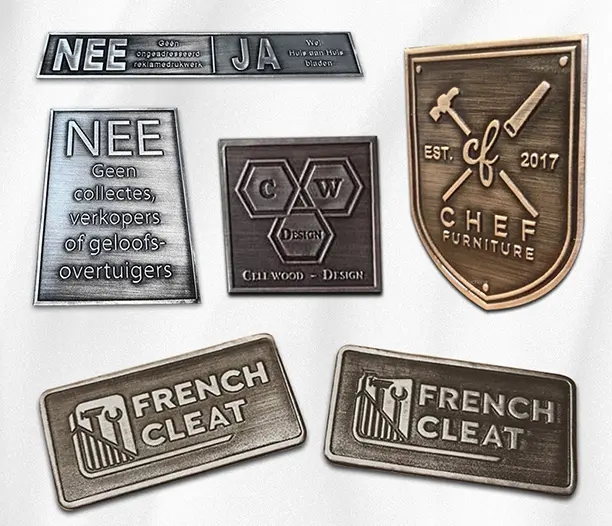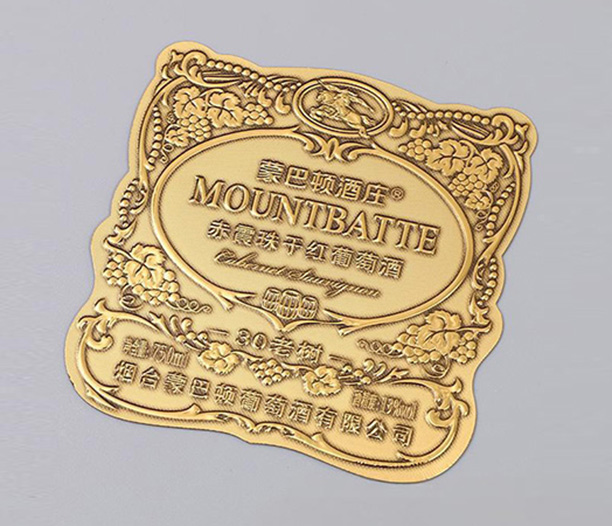The Globally Harmonized System of Classification and Labelling of Chemicals (GHS) transformed chemical safety by establishing a standardized, globally recognized framework for communicating hazards. Its instantly recognizable pictograms, signal words, and hazard statements are designed to protect workers, transporters, consumers, and the environment by clearly conveying critical safety information across borders and languages. Understanding the required elements is crucial, but equally important is knowing which element is not found on GHS labels. This exclusion is deliberate and significant for safety and compliance.

The Core 6 Elements of a GHS Label
Before identifying which element is not found on GHS labels, it's essential to firmly establish what definitively must be present on a compliant GHS label. These six elements provide the immediate hazard communication needed for safe handling:
Product Identifier: This uniquely identifies the chemical substance or mixture. It could be the chemical name (e.g., "Sodium Hydroxide"), a trade name, or a specific product code assigned by the manufacturer or supplier.
Supplier Identification: This includes the name, full address, and telephone number of the manufacturer, importer, or other responsible party. This allows users to identify the source and contact them if necessary.
Signal Word: A single word indicating the relative level of hazard severity:
"Danger": Used for more severe hazards.
"Warning": Used for less severe hazards.
Only one signal word appears per label, with "Danger" taking precedence over "Warning".
Hazard Pictograms: Black symbols on a white background within a red diamond-shaped border. Each pictogram represents specific hazard classes:
Exploding Bomb (Explosives, Self-Reactives, Organic Peroxides)
Flame (Flammables, Pyrophorics, Self-Heating, Emits Flammable Gas, Self-Reactives, Organic Peroxides)
Flame Over Circle (Oxidizers)
Gas Cylinder (Gases Under Pressure)
Corrosion (Skin Corrosion/Burns, Eye Damage, Corrosive to Metals)
Skull and Crossbones (Acute Toxicity - Fatal or Toxic)
Exclamation Mark (Irritant, Skin Sensitizer, Acute Toxicity - Harmful, Narcotic Effects, Hazardous to Ozone Layer)
Health Hazard (Carcinogen, Mutagenicity, Reproductive Toxicity, Respiratory Sensitizer, Target Organ Toxicity, Aspiration Toxicity)
Environment (Aquatic Toxicity - non-mandatory in US OSHA implementation, but often included voluntarily).
Hazard Statements: Standardized phrases assigned to a hazard class and category that describe the nature and, where appropriate, the degree of the hazard (e.g., “Fatal if swallowed,” “Causes severe skin burns and eye damage,” “Highly flammable liquid and vapor”).
Precautionary Statements: Phrases describing recommended measures to minimize or prevent adverse effects. These cover:
Prevention (e.g., “Wear protective gloves/eye protection/face protection,” “Use only outdoors or in a well-ventilated area”)
Response (e.g., “IF ON SKIN (or hair): Take off immediately all contaminated clothing. Rinse skin with water/shower,” “IF SWALLOWED: Immediately call a POISON CENTER or doctor/physician”)
Storage (e.g., “Store locked up,” “Store in a well-ventilated place. Keep cool”)
Disposal (e.g., “Dispose of contents/container in accordance with local/regional/national/international regulations”)
These six elements are the mandatory foundation for communicating hazards on primary container labels under the GHS.

Which Element is Not Found on GHS Labels? The NFPA Diamond
The clear and definitive answer to which element is not found on GHS labels is the NFPA 704 Hazard Diamond, commonly known as the "fire diamond."
This familiar diamond-shaped sign, divided into four color-coded quadrants (Blue = Health, Red = Flammability, Yellow = Instability/Reactivity, White = Special Hazards) and using a numerical rating system from 0 (minimal hazard) to 4 (severe hazard), was developed by the US National Fire Protection Association (NFPA). Its primary purpose is to provide rapid hazard information to emergency responders (like firefighters and HAZMAT teams) at the scene of an incident involving chemicals stored in fixed facilities.
Why is the NFPA Diamond Excluded? Understanding the Core Reasons
The exclusion of the NFPA Diamond from GHS labels is not an oversight; it's a fundamental aspect of the GHS design philosophy and driven by critical practical considerations:
Different Core Purpose & Audience:
GHS Labels: Target workplace hazard communication. They inform workers handling the chemical, transporters, and consumers about all potential hazards (health, physical, environmental) during normal use, handling, storage, transport, and foreseeable emergencies related to the chemical itself, regardless of location. The audience is broad: employees, shippers, downstream users.
NFPA 704 Diamond: Targets emergency first responders facing an acute incident (fire, spill, explosion) at a fixed location. It provides a rapid visual snapshot of the primary fire, health, and reactivity risks specifically in that location and context during the initial emergency response phase.
Scope of Application:
GHS Labels: Apply to containers (bottles, drums, totes, tanks) moving through commerce – shipped from suppliers, received by workplaces, used by employees. They travel with the chemical.
NFPA 704 Diamond: Applies to fixed locations – building entrances, exterior walls near storage areas, doors to labs or storage rooms, large stationary storage tanks, piping systems, loading docks. It's a placarding system, not a container label. It signifies hazards present within that specific area or structure.
Fundamental Differences in Hazard Communication Approach:
GHS: Uses a comprehensive system of qualitative hazard classes and categories, conveyed through standardized pictograms, signal words, and hazard/precautionary statements. It covers a wide range of hazards (acute toxicity, carcinogenicity, corrosivity, flammability, environmental hazards, etc.).
NFPA 704: Uses a simplified numerical rating system (0-4) for only three main hazard types (Health, Flammability, Reactivity) and symbols/written notations in the white quadrant for Special Hazards (like OX for oxidizer, W for water-reactive). The criteria for assigning these numbers differ significantly from GHS classification criteria.
Avoiding Confusion and Potential Misinterpretation:
This is paramount. Placing both systems on the same container label creates a high risk of dangerous confusion:
The numerical ratings (e.g., NFPA Health=3) do not directly correlate with GHS hazard categories (e.g., Acute Toxicity Category 1 vs. Category 4).
A chemical could have a low NFPA Health rating (e.g., 1 or 2) based on acute exposure concerns but still carry significant chronic health hazards (like carcinogenicity) clearly communicated via GHS pictograms (Health Hazard) and hazard statements. Relying solely on the NFPA diamond on a container could dangerously underestimate the risk.
Conversely, the NFPA Reactivity rating might be high due to potential for violent reaction in a large spill/fire scenario, while the GHS label might focus on specific physical hazards like flammability or corrosivity under normal conditions.
OSHA explicitly warns against this potential conflict in its GHS-aligned Hazard Communication Standard (29 CFR 1910.1200 Appendix C.2.3.3), stating that using the NFPA or HMIS rating systems on labels "might be confused with the hazard information required" by the GHS.
The Goal of Global Harmonization:
GHS was created to replace diverse and often conflicting national hazard communication systems (like the old US Material Safety Data Sheets and labeling) with a single, globally harmonized standard. Incorporating a system primarily used in the United States (NFPA 704) would fundamentally undermine this core objective. The GHS elements are designed to be universally understood regardless of language or geographical region.
HMIS: Another System Not Found on GHS Labels
While the NFPA Diamond is the most prominent system answering which element is not found on GHS labels, it's important to mention another US-centric system also excluded: the Hazardous Materials Identification System (HMIS®), developed by the American Coatings Association.
HMIS® typically uses color bars (Blue = Health, Red = Flammability, Orange = Physical Hazard) with numerical ratings (0-4) and often included Personal Protective Equipment (PPE) recommendations in a white section. Like NFPA 704, HMIS® was primarily designed for workplace hazard communication within a facility, often used on secondary containers or workplace labels.
Its exclusion from GHS shipped container labels follows the same core principles:
Conflict with Harmonization: It's a US-specific system, counter to GHS's global intent.
Potential for Confusion: Numerical ratings don't align perfectly with GHS hazard categories and criteria.
Different Focus: While HMIS® often included specific PPE recommendations directly on the label, GHS conveys PPE requirements through its Precautionary Statements (e.g., "Wear eye protection"). GHS leaves the final, context-specific PPE selection to the employer based on the hazard information provided and workplace risk assessments.
OSHA Stance: OSHA's GHS-aligned HCS does not recognize HMIS® ratings as a substitute for the required GHS label elements on shipped containers.
Practical Implications: Compliance and Avoiding Confusion
Knowing which element is not found on GHS labels has direct and critical consequences for chemical manufacturers, distributors, employers, and users:
Manufacturer/Supplier Responsibility (Shipped Containers):
Suppliers must ensure that all shipped containers bear labels containing the six mandatory GHS elements.
Adding the NFPA Diamond or HMIS® ratings to the primary GHS label is strongly discouraged and often considered non-compliant by regulatory bodies like OSHA (in the US) and equivalent authorities globally implementing GHS. The core GHS information must be clear, prominent, and uncluttered. Mixing systems creates the confusion hazards outlined above.
Workplace Labeling (Secondary Containers):
When employers transfer chemicals from primary (shipped) containers into secondary containers (e.g., smaller bottles, jugs, beakers, process tanks) within their facility, these secondary containers must be labeled.
OSHA provides flexibility for workplace labeling:
Option 1: Replicate the full GHS label (all six elements) from the shipped container onto the secondary container. This is often the clearest and safest approach.
Option 2: Use an alternative workplace labeling system (like simplified formats with NFPA diamonds or HMIS® color bars). CRITICAL CAVEAT: The alternative system MUST provide all the information required by the GHS – that is, the Product Identifier, applicable Signal Word, Hazard Statements, Pictograms, and Precautionary Statements. Simply putting an NFPA diamond number or HMIS® color bar without the corresponding GHS text and pictograms is INSUFFICIENT and NON-COMPLIANT. The alternative label must convey the same hazard information as the full GHS label. Many employers find replicating the core GHS elements simpler and less prone to error.
Facility Placarding (NFPA 704):
While the NFPA Diamond doesn't belong on GHS container labels, employers must comply with relevant fire codes (often based on NFPA standards) regarding its use on buildings, doors leading to storage areas, large stationary storage tanks, piping, and loading docks within their facility.
This placarding is separate and distinct from GHS container labeling requirements and serves its vital role for emergency responders at the fixed site.
Employee Training:
Training under OSHA's HazCom Standard (and equivalent regulations) must comprehensively cover:
How to read and understand the six GHS label elements.
How to find critical information on a GHS label and Safety Data Sheet (SDS).
Which element is not found on GHS labels (the NFPA Diamond).
Where employees will encounter the NFPA Diamond (on buildings, tanks, facility doors) and its purpose for emergency responders.
The meaning of the NFPA diamond ratings and/or any HMIS® ratings if used in the workplace (e.g., on secondary container labels or area placards).
The key differences between the GHS system and the NFPA/HMIS® systems to prevent dangerous misinterpretation (e.g., understanding that an NFPA Health 2 doesn't mean no significant chronic hazard).
Emergency Response Planning:
Facilities must ensure emergency responders have access to comprehensive hazard information. This includes:
Proper NFPA 704 placarding where required by code.
Immediate access to Safety Data Sheets (SDSs), which contain full hazard details, including relevant NFPA and HMIS® ratings typically found in Section 16: Other Information.
The question of which element is not found on GHS labels has a definitive answer: the NFPA 704 Hazard Diamond. This exclusion is a cornerstone of the GHS framework, designed to achieve global harmonization, prevent conflicting and confusing information on container labels, and maintain clarity of purpose. The GHS label, with its six mandatory elements, provides comprehensive hazard communication for the chemical itself throughout its lifecycle in commerce and the workplace. The NFPA Diamond serves an equally vital, but fundamentally distinct, role in communicating risks for emergency responders at fixed facilities.
Understanding this distinction is not just academic; it's fundamental to chemical safety, regulatory compliance, and preventing potentially dangerous misunderstandings. Manufacturers and suppliers must strictly adhere to the core GHS elements on shipped containers. Employers must ensure clear, compliant labeling in the workplace, whether using full GHS replication or carefully constructed alternative systems that convey all required GHS information. Facilities must implement appropriate NFPA 704 placarding as mandated by fire codes. By respecting the separate, well-defined roles of GHS container labeling and the NFPA fixed-facility placarding, we contribute significantly to a safer environment for workers, transporters, consumers, and the emergency responders who protect us. Always consult the Safety Data Sheet (SDS) for the most comprehensive hazard information about any chemical.





